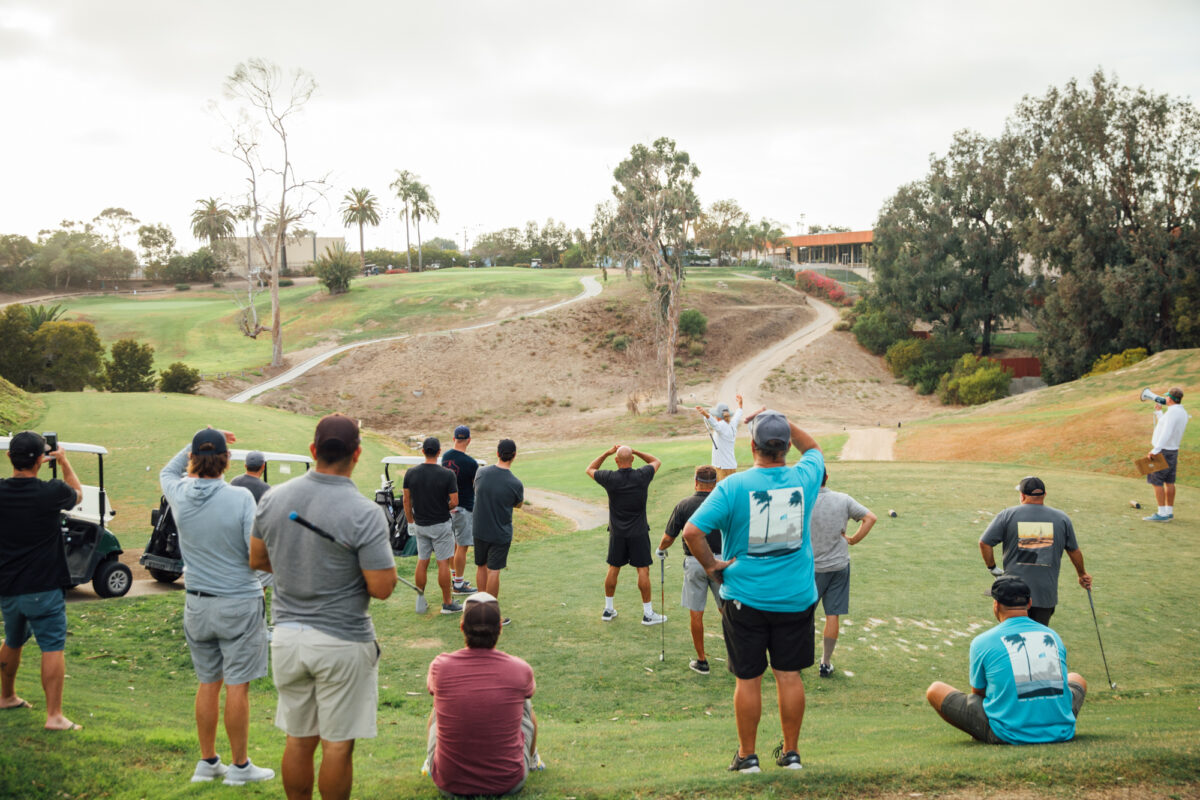Khaki pants, tucked-in polos and $1,000 bets are not for everyone.
Too many golf tournaments are pressure-packed affairs that are more nerve-wracking than enjoyable, but Linksoul, an apparel and lifestyle brand co-founded by John Ashworth and Geoff Cunningham, is trying to introduce a tournament series that is based more around a shared love for the game, a vibe and fun.
The LS2MAN tournament series is comprised of six events in locations like Ireland, California and Oregon. It mixes tranquil scenery with just enough competitive golf to keep things low-key but interesting.
I had the opportunity to play in the recent Linksoul LS2MAN event at Goat Hill Park in Oceanside, California, and instead of those khakis and polos, I saw board shorts, T-shirts and guys rocking streetwear-style looks. Think surfer-casual blended with golf and The Dude from “The Big Lebowski.”
Hey, now that I think about it, Ashworth looks a little like Jeff Bridges in that movie.
For those of you who are not golf hipsters, Goat Hill Park, which is owned by Ashworth, is a short public course in the heart of Oceanside that is full of blind shots and extreme elevation changes. It’s a Mecca for West Coast players and its motto is etched into the pencils you use to write down your scores, “World Class, Working Class.”

At just 4,582 yards from the back tees, tournament organizers, in keeping with the vibe, banned drivers and fairway woods, except for persimmon clubs, which several golfers proudly brought to the course on each of the two days. Your average muscular gym rat would be disappointed that they couldn’t grip and rip their driver all day long. (Cough cough, me.) This was the opportunity to bring out your inner-Tiger Woods and cut the ball over the bunker or around the trees.

The air around the first tee smelled like a nearby campfire and dogs were warmly welcomed to enhance the scene. I knew it was going to be a good day when I was greeted by a dog named Mulligan, who ran up to me and jumped excitedly.
This tournament brings out all types of golfers and looked like a scene from “Happy Gilmore.” You had the players who are there to win and others who were still under the influence of mushrooms from the night before. Almost every golf cart had a speaker.
The guys we played with on the first day arrived late and ran to meet us on the 5th hole. They got their cart when we turned after the 9th. This course wasn’t an easy trek, and I guarantee they managed to hit their step goal within the first couple of holes. The better of the two used the Mizuno muscleback blades and they kept repeating Loverboy’s “Everybody’s Working For The Weekend” because they got a birdie early in the round when that song blasted on their speaker.
In college, the pressures of competitive golf really began to take a toll on me and my love for the sport. The pressure to perform and go low caused my muscles to tighten, my thoughts to run wild and my scores to rise. Many golfers experience the same feeling, and in my case, it made me fall out of love with tournament golf.
The LS2MAN ignited a spark in me to try my luck at tournament play again. It felt liberating to be able to hold my own against a field full of men. It also reminded me that I can still go low, without spending four hours stressing over the things I can’t control.
I felt lucky to take part in the LS2MAN series and I see myself being involved in the future. You can learn more and sign up for updates for the 2023 LS2MAN series here.
[mm-video type=playlist id=01es6rjnsp3c84zkm6 player_id=none image=https://golfweek.usatoday.com/wp-content/plugins/mm-video/images/playlist-icon.png]





